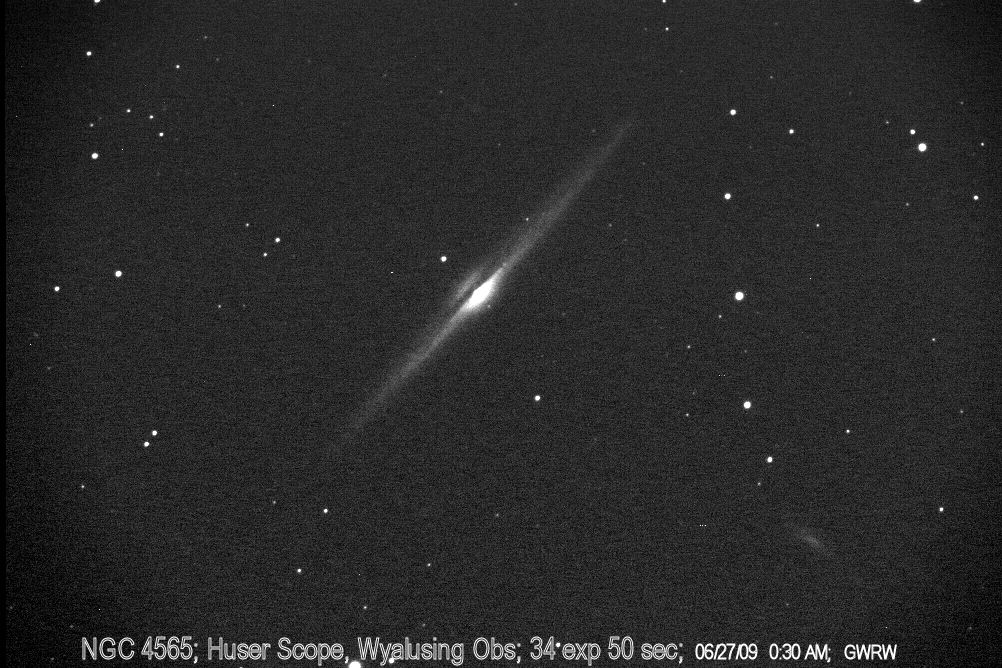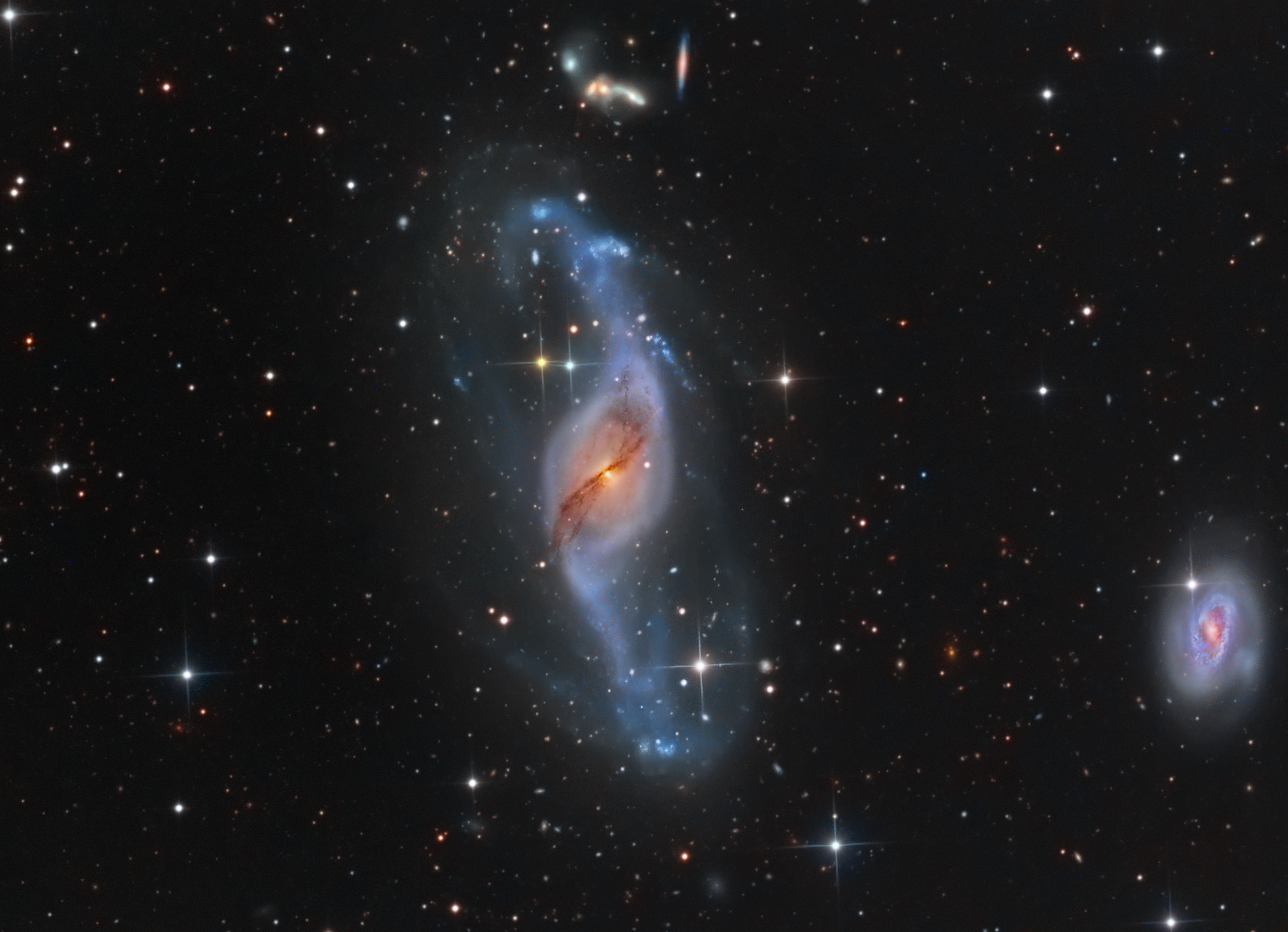The galaxies at the limit of visibility will channel only a few thousand photons per second inside the optical path of your telescope. The chance that those photons, among all those sent out from that distant galaxy in five billion years, make it there and get detected by your eye is of the order of a part in 10^69. That's quite a number!! If I took the protons of one of my blood cells and I dispersed them in the universe, you would believe that the odds that a random proton belonged to the dispersed set are kind of slim... Well, those are about the same odds as those of a photon from that galaxy to get to your pupil! [*]
I find the above so incredibly fascinating that it is a compelling enough reason to fill my car with 60 kg of equipment and a significant amount of warm clothing, drive a couple of hours toward the remotest spot of the eastern dolomites, and set up my telescope in the middle of nowhere, fighting sub-zero temperatures and sleep deprivation to give those photons their due chance.
So after a hiatus of almost three years, on Sunday I traveled to the mountains equipped with my 16-inch Dobson telescope for an observing session. I chose a place called "Casera Razzo", near an alpine pass at 1800 meters above sea level. It is surrounded by mountains and sufficiently far and screened from the obnoxious polluting lights of the pianura padana. There, the moonless sky often reaches visual magnitudes of 21.5 per square arcdegree. It is _the_ most important factor to allow faint galaxies to become visible.
In the afternoon thick clouds from heat convection had formed over the mountains, but luckily, as the sun set and temperature dropped to zero, the sky became completely clear. It took me and Kalliopi about 20 minutes to assemble and properly collimate the telescope, and finally we started our observing session.
During four hours of stargazing we observed a large number of objects. Among those I remember dearly I will only comment on the following:

- NGC4565 and its companion NGC4562: this edge-on galaxy shows a dark bands along its full length, and it is quite a showpiece under dark skies. I had observed it in many other occasions but this time it made a true impression. The view from the eyepiece was quite similar to the one seen in the picture on the right. (image credit: www.starsplitters.org)
 - NGC 3718 and its faint companions: this is a odd-shaped galaxy in Ursa Mayor, which sits close to a quintet of tiny galaxies all in the Mv=15-16 range. These are tough to observe even with a 16" telescope, but the very low turbulence of the night made four of them a relatively easy target.
- NGC 3718 and its faint companions: this is a odd-shaped galaxy in Ursa Mayor, which sits close to a quintet of tiny galaxies all in the Mv=15-16 range. These are tough to observe even with a 16" telescope, but the very low turbulence of the night made four of them a relatively easy target.The image on the left is unfortunately *not* similar to what was visible at the eyepiece - but it is a fascinating shot and I decided to use it here for illustrative purposes. The small galaxies at the center top are the ones I mentioned above. (image credit: apod.nasa.gov).
Besides deep sky objects, we spent about half an hour watching Jupiter. The very low turbulence allowed steady observation at 400x magnification, and we even tried 800x - the planet looks enormous at that power. Jupiter was showing its "unfashionable" side, the one opposite to the giant red spot. But its disk was very rich with details in the bands, with festoons and storms.
All in all, a very rich observing session. I decided I will have another one next month, hopefully coordinating with a friend, Mauro, who owns a 24-incher...
[*] I believe it is a good idea to share my back-of-the-envelope calculation here, as it could be wrong by a few orders of magnitude... :)
So, to know how many photons are emitted by a "typical star" per second I take the sun. I reason that the faintest star visible to the eye has a visual magnitude of +6, while the sun has a visual magnitude of -27, or 33 magnitudes higher flux - which is 2.512^33, or roughly 1.5x10^13 times larger. As I know that the faintest light signal we can see in the dark is of the order of 1000 visible photons, this means that the sun shoots at your pupil about 10^16 photons a second (but don't try to catch them all or you'll burn your retina!). And how many does it broadcast in total ? We are at a distance of 1.5x10^11 meters, where the sun's flux gets dispersed over an area of 4*pi*R^2= 12*2.25*10^22 square meters = 2.7x10^23 m^2. Our pupil has an area of a third of a square centimeter - a thirty-thousandth of a square meter; so the detection efficiency of solar photons by our eye, for us sitting on the Earth, is one per 30000x2.7x10^23 = a part in 10^28.
By multiplying the "detection efficiency" of our pupil for sun's photons by the flux we get, we may thus estimate that a star like the sun sends out a flux of 10^28*10^16=10^44 photons per second. Now, let us get back to our far away galaxy. Suppose it has a hundred billion sun-like stars (10^11), and suppose those stars have been burning for 5 billion years, which are about 10^17 seconds. This means the galaxy has broadcast 10^17*10^11*10^44 photons in its history. That's 10^72 photons. But we are talking about getting to see 1000 of them, so the ratio is 10^69.




Comments